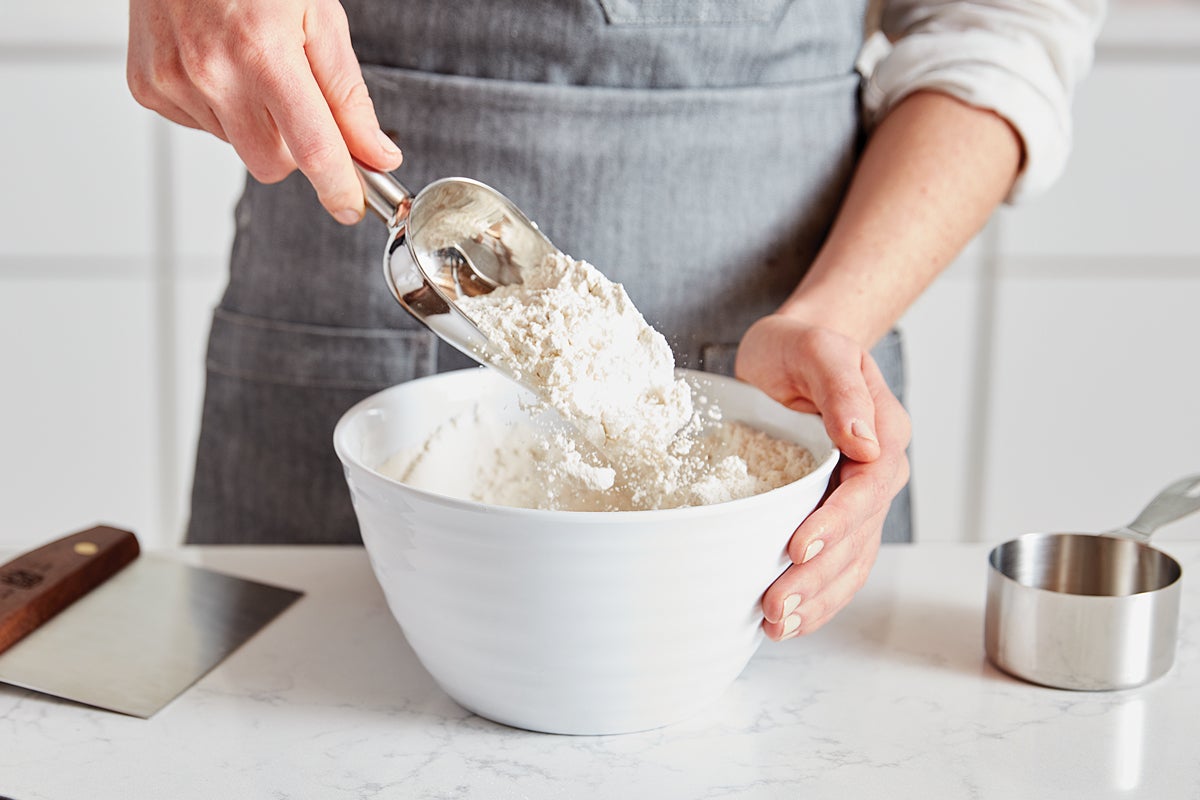Choosing the Right Flour for Every Bake

The key to successful baking lies in choosing the right flour for the job. At Delights Bakery, we believe that understanding flour types is a fundamental baking essential for creating perfect breads, cakes, cookies, and more. Each flour has unique properties that affect texture, structure, and flavor. Whether you're a beginner or a seasoned baker, this guide will help you select the ideal flour for every bake!
Why Flour Choice Matters
Flour is the backbone of most baked goods, and its protein content, grain type, and processing impact the final result:
- Protein Content: Determines gluten development, affecting texture and structure.
- Grain Type: Wheat, rye, or alternatives like almond flour cater to different dietary needs.
- Processing: Bleached, unbleached, or whole grain flours offer distinct flavors and textures.
- Consistency: The right flour ensures reliable results, from airy cakes to chewy breads.
Common Types of Flour and Their Uses
1. All-Purpose Flour
Protein Content: 10-11.7%
Best For: Cookies, muffins, quick breads, and some cakes.
Why Use It: A versatile, medium-protein flour that balances structure and tenderness. Perfect for most home baking.
2. Bread Flour
Protein Content: 12-14%
Best For: Yeast breads, bagels, and artisan loaves.
Why Use It: High protein content creates strong gluten networks for chewy, well-risen breads.
3. Cake Flour
Protein Content: 6-8%
Best For: Soft cakes, cupcakes, and delicate pastries.
Why Use It: Low protein ensures a tender, fine crumb for light, fluffy cakes.
4. Pastry Flour
Protein Content: 8-10%
Best For: Pie crusts, tarts, and flaky pastries.
Why Use It: Balances tenderness and flakiness for delicate, buttery results.
5. Whole Wheat Flour
Protein Content: 13-14%
Best For: Whole grain breads, muffins, and hearty cookies.
Why Use It: Adds nutty flavor and fiber but may need extra liquid due to its density.
6. Almond Flour
Protein Content: Low (grain-free)
Best For: Gluten-free cookies, cakes, and macarons.
Why Use It: Provides a moist, nutty texture and is ideal for low-carb or gluten-free diets.
7. Rye Flour
Protein Content: 8-10%
Best For: Sourdough, rye breads, and crackers.
Why Use It: Offers a distinct, earthy flavor and dense texture, often blended with wheat flour.
Tips for Choosing and Using Flour
Maximize your baking success with these flour tips:
- Weigh Your Flour: Use a digital scale for precision, as scooping can compact flour and lead to dense results.
- Sift When Needed: Sift low-protein flours like cake flour to aerate and remove lumps.
- Store Properly: Keep flour in airtight containers in a cool, dry place to maintain freshness.
- Blend Flours: Combine flours (e.g., whole wheat with all-purpose) for balanced flavor and texture.
- Check Protein Content: Match the flour’s protein level to your recipe’s needs for optimal results.
Common Mistakes to Avoid
- Using the Wrong Flour: Substituting all-purpose for bread flour can result in flat, dense loaves.
- Overmeasuring Flour: Scooping directly from the bag compacts flour; spoon and level or weigh instead.
- Ignoring Freshness: Old flour can affect flavor and performance; check expiration dates.
- Skipping Gluten-Free Adjustments: Gluten-free flours like almond flour require binders like eggs or xanthan gum.
Frequently Asked Questions
Can I Substitute All-Purpose Flour for Cake Flour?
Yes, remove 2 tbsp flour per cup and replace with 2 tbsp cornstarch, then sift to mimic cake flour’s texture.
How Do I Store Gluten-Free Flours?
Store in airtight containers in the fridge or freezer to prevent rancidity, especially for nut-based flours.
What’s the Difference Between Bleached and Unbleached Flour?
Bleached flour is chemically treated for a softer texture; unbleached is natural with a slightly denser result.
Can I Use Whole Wheat Flour in All Recipes?
It’s denser, so blend with all-purpose flour and add extra liquid for lighter textures in delicate bakes.
Final Thoughts
Choosing the right flour is the foundation of every great bake. At Delights Bakery, we love empowering bakers with baking essentials like this guide to flour types. Experiment with different flours to discover new textures and flavors in your creations. Share your baking results in the comments below, and let us know your favorite flour tips for a chance to feature them!

Comments
Post a Comment